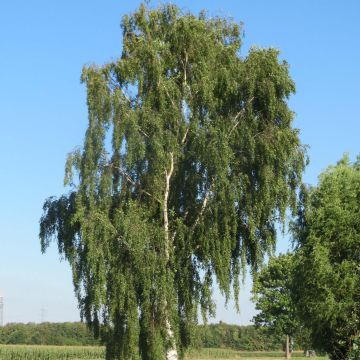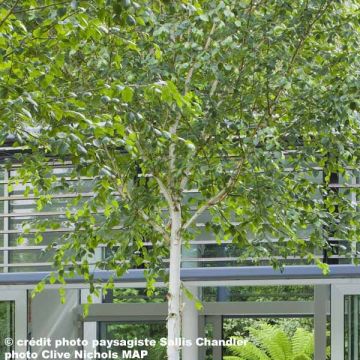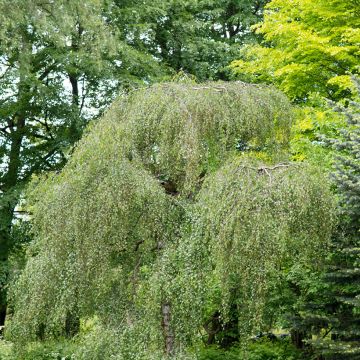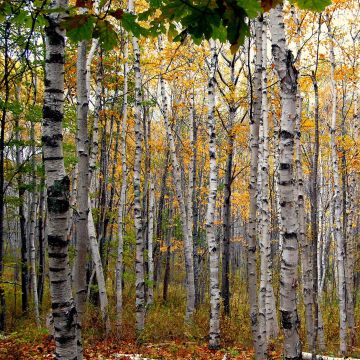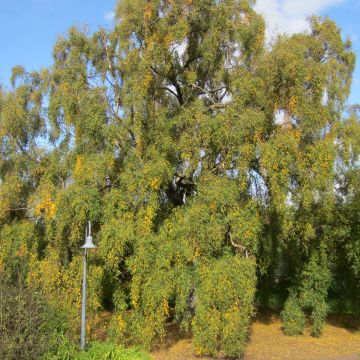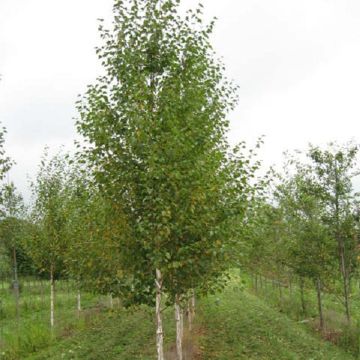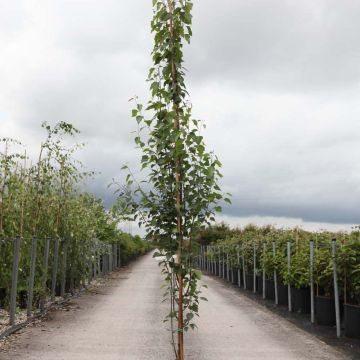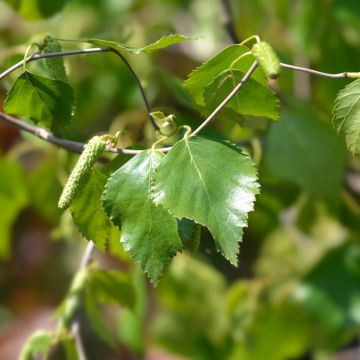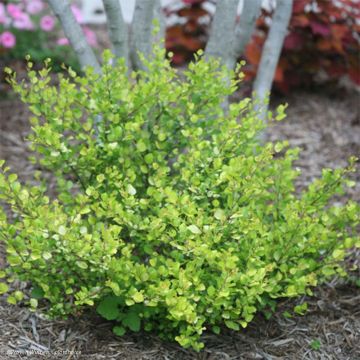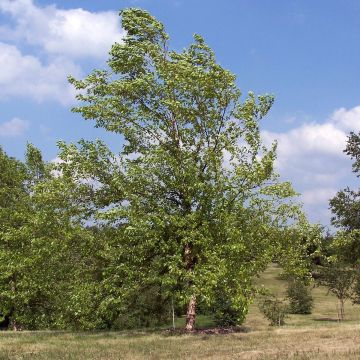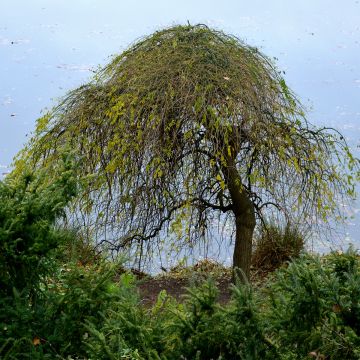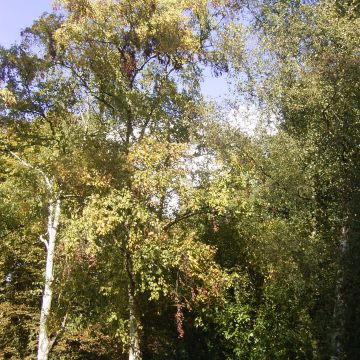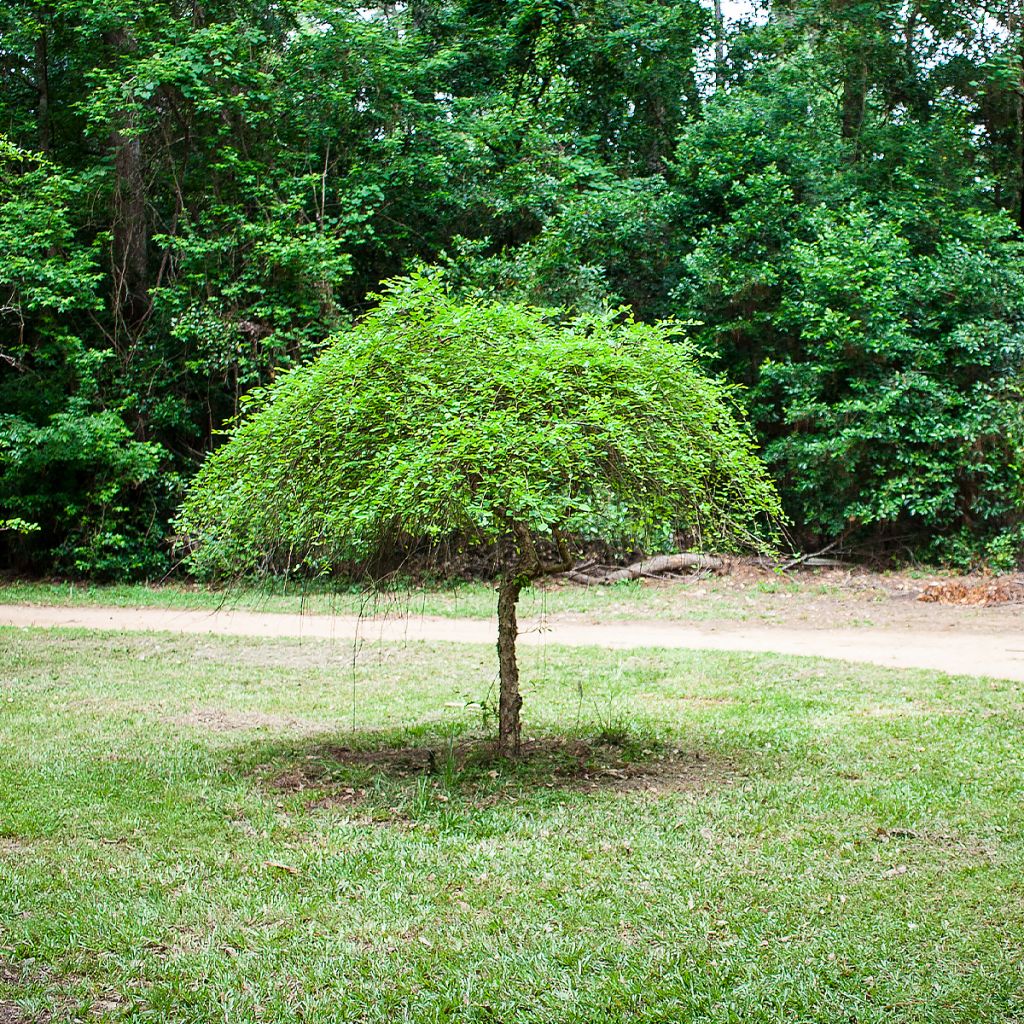

Betula nigra Summer Cascade - Birch
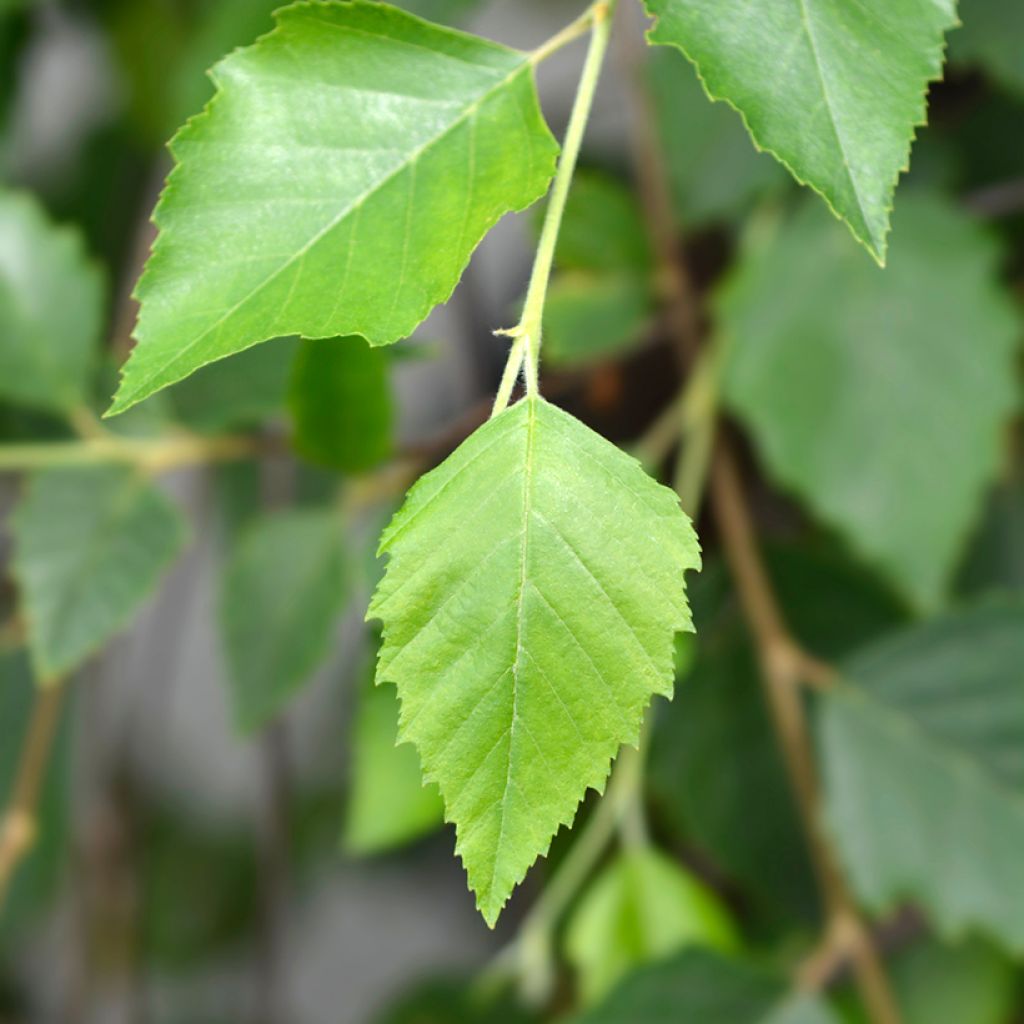

Betula nigra Summer Cascade - Birch
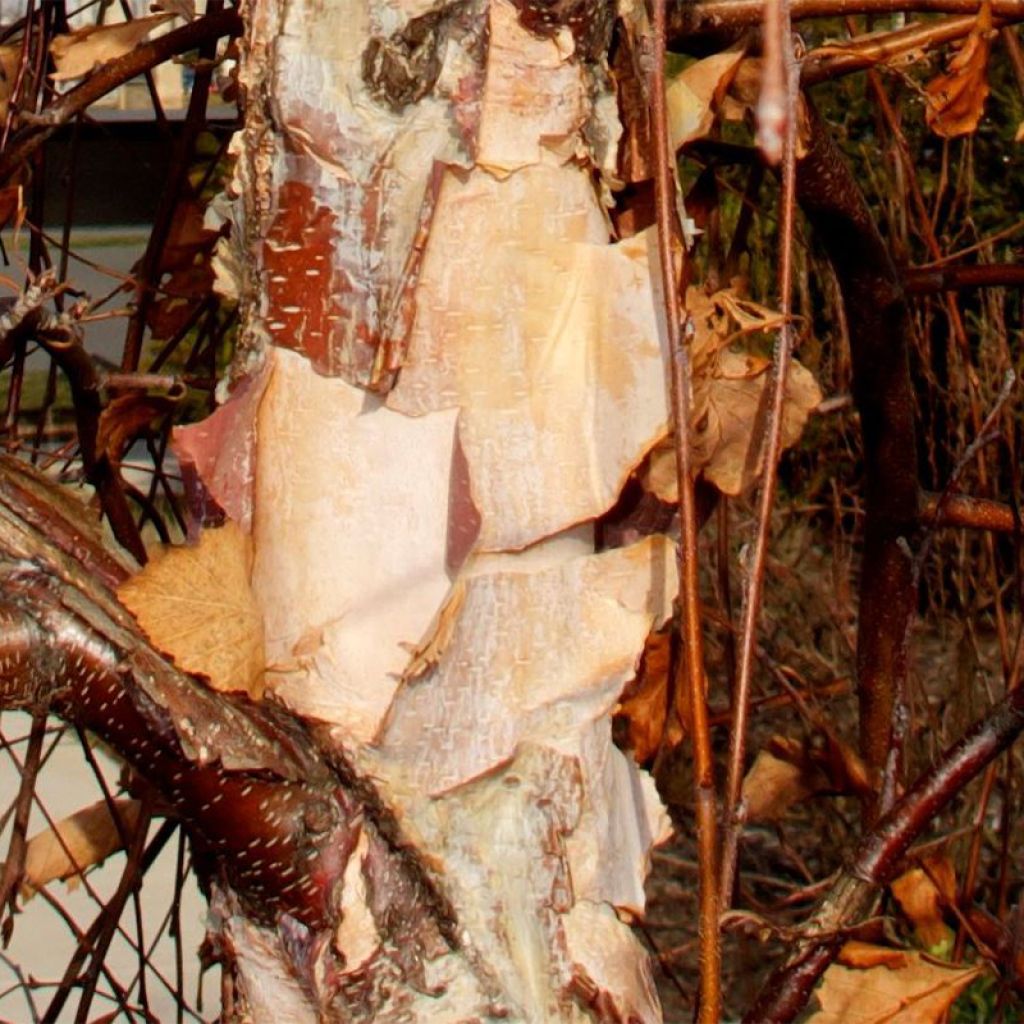

Betula nigra Summer Cascade - Birch
Betula nigra Summer Cascade - Birch
Betula nigra Summer Cascade
Black Birch, River Birch, Water Birch
Why not try an alternative variety in stock?
View all →This plant carries a 24 months recovery warranty
More information
We guarantee the quality of our plants for a full growing cycle, and will replace at our expense any plant that fails to recover under normal climatic and planting conditions.
Oversize package: home delivery by special carrier from €6.90 per order..
Express home delivery from €8.90.
Does this plant fit my garden?
Set up your Plantfit profile →
Description
Betula nigra 'Summer Cascade' is a black birch with an unusual weeping habit. It is a small tree with long, flexible branches that arch down in cascades, adorned with shiny medium green triangular leaves. In autumn, they turn bright yellow before falling to the ground revealing a framework covered in a thin paper-like bark that peels off in pink and orange shreds to expose the smooth, very light surface underneath. Black birch is a robust, hardy species that is easy to grow in full sun or partial shade in non-calcareous, moist to wet, even heavy soils.
The Black birch, or Betula nigra, is a deciduous tree native to warm regions in southeastern U.S.A. In nature, it is found along watercourses and swamps, although it can tolerate much drier conditions. It is also called "River Birch".
The 'Summer Cascade' cultivar was bred back in 1996 by J.D. Allen in the United States. It is distinctive because of its compact growth and graceful weeping habit. This small tree develops very slowly compared to other varieties. Its branches naturally weep and arch gracefully, almost touching the ground. With age, the tree acquires a wide canopy of 4 m (13 ft 1 in), branching at a height of 6 m (19 ft 8 in) above the ground. Juvenile trunks are silver-white, until a fairly advanced age. The brown bark of old trees, is furrowed at the base and peels off in large pink and orange flakes, revealing the lighter, new bark underneath. The young branches are brownish and dotted with dark lenticels. Its triangular leaves turn golden yellow in autumn.
The 'Summer Cascade' black birch is a fairly tolerant plant when it comes to soil, as long as it is not too dry or calcareous. It is useful for drying out overly wet soils in summer. It thrives in partial shade, with its weeping shape and dwarf growth making it a real asset for small to medium-sized gardens. It will be at its best in the centre of a border, surrounded by ground-cover perennials such as lungworts, Trachystemon orientalis, or a carpet of wood anemones. It lends itself to superb combinations with other plants that are particularly striking in winter, such as Cornus with its multicoloured bark, witch hazels and the fragrant, winter flowering Sarcococca. Its autumn foliage can be combined with that of the Nyssa sylvatica in boggy soil or at the edge of a pond, or with that of deciduous viburnums or Parrotia persica in drier soil…
Report an error about the product description
Betula nigra Summer Cascade - Birch in pictures


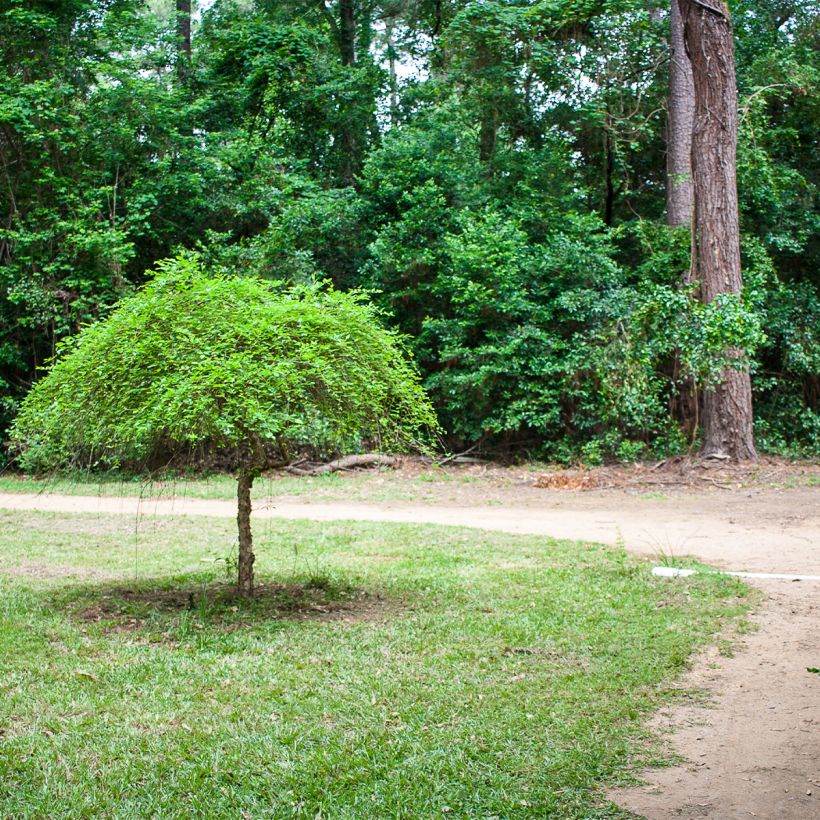

Plant habit
Flowering
Foliage
Safety measures
Botanical data
Betula
nigra
Summer Cascade
Betulaceae
Black Birch, River Birch, Water Birch
Cultivar or hybrid
atteinterespiratoire
Cette plante peut entraîner des symptômes allergiques.
Evitez de la planter si vous ou vos proches souffrez de rhinite saisonnière ("rhume des foins").
Davantage d'informations sur https://plantes-risque.info
Other Betula - Birch tree
Planting and care
Very easy to grow in soil that is not too dry or too chalky (even clayey, heavy, waterlogged, poorly drained and boggy soil), the 'Summer Cascade' black birch requires little maintenance, apart from regular watering and the application of mulch in the event of prolonged drought. It should preferably be planted in a moist, fertile soil, where it will be more beautiful and grow faster, but it will also do well in slightly chalky or sandy, occasionally dry soil, in full sun or partial shade. Pruning is not necessary. The plant is remarkably resistant to pollution, diseases or parasites that usually attack birch trees.
Planting period
Intended location
Care
This item has not been reviewed yet - be the first to leave a review about it.
Haven't found what you were looking for?
Hardiness is the lowest winter temperature a plant can endure without suffering serious damage or even dying. However, hardiness is affected by location (a sheltered area, such as a patio), protection (winter cover) and soil type (hardiness is improved by well-drained soil).

Photo Sharing Terms & Conditions
In order to encourage gardeners to interact and share their experiences, Promesse de fleurs offers various media enabling content to be uploaded onto its Site - in particular via the ‘Photo sharing’ module.
The User agrees to refrain from:
- Posting any content that is illegal, prejudicial, insulting, racist, inciteful to hatred, revisionist, contrary to public decency, that infringes on privacy or on the privacy rights of third parties, in particular the publicity rights of persons and goods, intellectual property rights, or the right to privacy.
- Submitting content on behalf of a third party;
- Impersonate the identity of a third party and/or publish any personal information about a third party;
In general, the User undertakes to refrain from any unethical behaviour.
All Content (in particular text, comments, files, images, photos, videos, creative works, etc.), which may be subject to property or intellectual property rights, image or other private rights, shall remain the property of the User, subject to the limited rights granted by the terms of the licence granted by Promesse de fleurs as stated below. Users are at liberty to publish or not to publish such Content on the Site, notably via the ‘Photo Sharing’ facility, and accept that this Content shall be made public and freely accessible, notably on the Internet.
Users further acknowledge, undertake to have ,and guarantee that they hold all necessary rights and permissions to publish such material on the Site, in particular with regard to the legislation in force pertaining to any privacy, property, intellectual property, image, or contractual rights, or rights of any other nature. By publishing such Content on the Site, Users acknowledge accepting full liability as publishers of the Content within the meaning of the law, and grant Promesse de fleurs, free of charge, an inclusive, worldwide licence for the said Content for the entire duration of its publication, including all reproduction, representation, up/downloading, displaying, performing, transmission, and storage rights.
Users also grant permission for their name to be linked to the Content and accept that this link may not always be made available.
By engaging in posting material, Users consent to their Content becoming automatically accessible on the Internet, in particular on other sites and/or blogs and/or web pages of the Promesse de fleurs site, including in particular social pages and the Promesse de fleurs catalogue.
Users may secure the removal of entrusted content free of charge by issuing a simple request via our contact form.
The flowering period indicated on our website applies to countries and regions located in USDA zone 8 (France, the United Kingdom, Ireland, the Netherlands, etc.)
It will vary according to where you live:
- In zones 9 to 10 (Italy, Spain, Greece, etc.), flowering will occur about 2 to 4 weeks earlier.
- In zones 6 to 7 (Germany, Poland, Slovenia, and lower mountainous regions), flowering will be delayed by 2 to 3 weeks.
- In zone 5 (Central Europe, Scandinavia), blooming will be delayed by 3 to 5 weeks.
In temperate climates, pruning of spring-flowering shrubs (forsythia, spireas, etc.) should be done just after flowering.
Pruning of summer-flowering shrubs (Indian Lilac, Perovskia, etc.) can be done in winter or spring.
In cold regions as well as with frost-sensitive plants, avoid pruning too early when severe frosts may still occur.
The planting period indicated on our website applies to countries and regions located in USDA zone 8 (France, United Kingdom, Ireland, Netherlands).
It will vary according to where you live:
- In Mediterranean zones (Marseille, Madrid, Milan, etc.), autumn and winter are the best planting periods.
- In continental zones (Strasbourg, Munich, Vienna, etc.), delay planting by 2 to 3 weeks in spring and bring it forward by 2 to 4 weeks in autumn.
- In mountainous regions (the Alps, Pyrenees, Carpathians, etc.), it is best to plant in late spring (May-June) or late summer (August-September).
The harvesting period indicated on our website applies to countries and regions in USDA zone 8 (France, England, Ireland, the Netherlands).
In colder areas (Scandinavia, Poland, Austria...) fruit and vegetable harvests are likely to be delayed by 3-4 weeks.
In warmer areas (Italy, Spain, Greece, etc.), harvesting will probably take place earlier, depending on weather conditions.
The sowing periods indicated on our website apply to countries and regions within USDA Zone 8 (France, UK, Ireland, Netherlands).
In colder areas (Scandinavia, Poland, Austria...), delay any outdoor sowing by 3-4 weeks, or sow under glass.
In warmer climes (Italy, Spain, Greece, etc.), bring outdoor sowing forward by a few weeks.

































